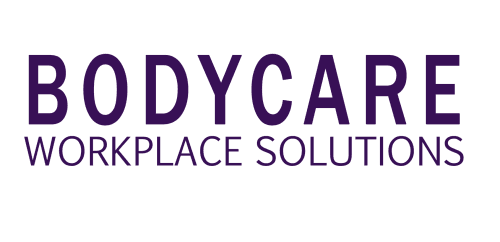3 steps to designing your workplace around ergonomics

Office life is more sedentary than ever before. Email and video conferencing mean we no longer need to leave our desks to do our jobs effectively and this is taking a serious toll on employee health and wellbeing.
That’s why it’s more important than ever to think about workplace ergonomics. The right office design can have a huge impact on the happiness and productivity of your workers, not to mention it also minimizes the likelihood of injuries occurring.
Here’s what you need to know about ergonomics.
What is workplace ergonomics?
Ergonomics is the science of designing the workplace to suit an individual’s specific needs. Instead of taking a “one size fits all” approach, as most offices have done in the past, it’s important to ensure that equipment, tools and workstations can be adjusted to ensure that correct ergonomic set up can be achieved. That means taking each worker’s individual needs into account (ie their height), and ensuring that the office environment is designed so everyone can do their jobs to the best of their ability.
Take this for example, when you drive a new car, what is the first thing you do? You adjust your surroundings – the rear-view mirror, the seat depending on how much leg room you require, and how upright you like to sit whilst driving and even the steering wheel height. You do this in order to feel comfortable during your journey, so why not do this at work when setting up a new work station?
With musculoskeletal injuries, eye strain and mental health difficulties now all leading causes of time taken off work, it’s important to adapt your office to make sure these health and safety risks are reduced.
So, when designing your office space, here’s what you need to take into consideration:
1. Make the best use of the space
One of the main functions of workplace ergonomics is to improve health and safety and remove risk factors that lead to musculoskeletal injuries. If your office is too crowded and cluttered, this prevents your employees having enough room to move around safely. It’s essential to have plenty of clear space in your workplace if you want to reduce the risks of accidents and injuries.
A crowded, cluttered office space can also have a negative effect on productivity. Workers find it difficult to concentrate when they’re surrounded by visual distractions. This can quickly cause stress levels to rise.
To prevent these things from happening, you need to make the best possible use of the available space. Make sure desks are arranged in a way that gives everyone enough personal space. Any unnecessary furniture or equipment should be removed, creating as much space as possible.
2. Think about your furniture
The average office worker now spends over 65 percent of the working day sitting down. This has negative health implications and often leads to strains and injuries to muscles and joints.
It’s important to make sure every worker has furniture that’s appropriate to their needs. For example, standard office desks tend to be designed for workers over six feet tall. This means most female employees, and some of the men, are sitting in the wrong position to use a computer safely without straining their neck or putting extra load on their lower back.
Sit-stand desks can help to solve this problem. They can be adjusted to a wide range of heights, so that workers can find the most comfortable position for them. This option also allows them to adjust their posture throughout the day, and work standing up if they choose. Having an adjustable workstation means that employees have the ability to move between seated and standing positions throughout the day reducing the amount of time they spend is a sedentary position.
Office chairs also need to be the right size for each worker, so the back and arm rests can take the strain as they’re supposed to.
3. Get the lighting right
Lighting has a significant effect on mood and productivity. Too bright, and workers may struggle to concentrate, or have trouble seeing their computer screens. Too dim, and they may feel sleepy and sluggish.
Your office lighting needs to strike the right balance. Aim for as much natural daylight as possible, but make sure the windows have blinds, so employees can reduce glare if and when they need to. You’ll also need artificial lighting that’s bright enough to keep everyone alert without causing irritability and headaches.
You need to bear in mind that some workers may have different needs when it comes to lighting. It’s important to consult with your employees to find out what lighting works best for each job role, and whether anyone has problems with their sight which could be made easier by better lighting.
How to make sure your workplace is ergonomically friendly
It’s important to take into consideration ergonomic setup when designing any new workstation or workplace. Consider getting professional advice before purchasing new equipment or engaging a professional to come into your workplace to provide individual advice on correct ergonomic set up. Remember that the smallest of changes can have a major impact – and they don’t have to be expensive changes.
If you’d like to book in ergonomic assessments for your workplace, please click below to get a quote:
References


